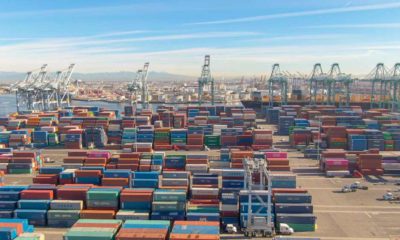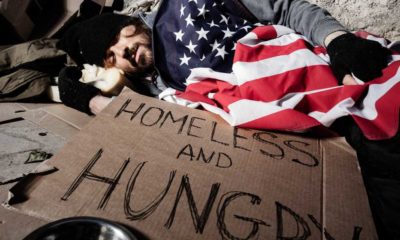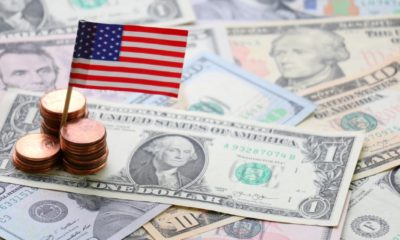Economy
Grown-Up Problems: Millenials Face Economic Hurdles

A new report released by New York City comptroller Scott Stringer is prompting the rest of the country to take a closer look at how the Millennial Generation will affect the country's economy in the years to come.
More than any other study on the same subject, Stringer's report – titled, “New York City's Millenials in Recession and in Recovery” – managed to effectively flesh out the financial travails of Millenials all over the country and reiterate the fact their plight will make a huge impact on the nation's economy.
Millenial Identity
First off, just who are the Millenials?
There are no specific dates for when this generation was (for lack of a better word) spawned. Various studies tag them as the people born between 1980 to 2000.
With around 80 million members, the Millennial Generation has already surpassed the Baby Boomers as the largest living American generation. Economists estimate that they collectively spend $600 billion annually. “By 2020, they could account for $1.4 trillion in spending or 30% of total retail sales,” noted Laura Shin in her Forbes article, “How the Millennial Generation Could Affect the Economy Over the Next Five Years.”
In her 2015 report, Beth Ann Bovino, Standard & Poor’s U.S. chief economist, theorized, “If the economy continues to strengthen, as Standard & Poor’s projects, there’s potential that Millennials could start making big-ticket purchases that contribute to economic growth. On the other hand, their student loan debt could keep them from spending and not buying houses, costing the economy.”
“Two-thirds of GDP (gross domestic product) is consumption, so we rely on people spending money,” added Bovino.
Then again, Millenials' spending power may continue to be hampered by several factors that are specific to their generation.
[buffet_recommended]
The New York Case Study
Stringer may have presented New York City's Millenial crowd as a case study, but his observations apply to the entire country's Millenial population. He wrote, “From 2007 to 2009, the nation suffered the worst recession since the Great Depression. During the same period, children of the Baby Boomer generation — a large population cohort known as the Millennials — began their working lives. Not since their grandparents or great-grandparents' generation have young people entered adulthood during such adverse labor conditions.”
Jen Kinney, in her article, “New York City Has a Millennials Problem,“ presented an in-a-nutshell overview of the scenario that Stringer referred to. She noted: “The U.S. economy lost over 8.7 million jobs between 2008 and 2010, jobs not regained until early 2014. During those six years without net job creation, over 22 million Millennials entered their working years nationwide.”
Stringer pointed out that “the lingering impacts of the recession on this large group of young workers – and the national and local policies adopted to address their unique challenges – will reverberate through the national economy for decades to come.”
By the Numbers
As a result of the recession back in 2007 to 2009, many Millenials — even those with college degrees — were driven to take jobs in the so-called “low-wage industries.” It's a trend that has persisted.
A report released by the Economic Policy Institute (EPI) explained, “Despite officially ending in June 2009, the recession left millions unemployed for prolonged spells, with recent workforce entrants such as young graduates being particularly vulnerable.”
EPI then revealed that for 2016's college graduates, the unemployment rate is currently 5.6 percent and the underemployment rate is 12.6 percent.
Meanwhile, for young high school graduates, the unemployment rate is 17.9 percent and the underemployment rate is 33.7 percent.
EPI explained that “the high share” of unemployed and underemployed young college graduates and the share of employed young college graduates working in jobs that do not require a college degree “stems from the weak demand for goods and services, which makes it unnecessary for employers to significantly ramp up hiring.”
Bovino also warned that “continued low wages for Millennials could reduce U.S. GDP by as much as $244 billion through 2019, or $49 billion a year, relative to our baseline scenario.”
Student Loans
Further complicating Millenials' economic predicament are their massive student loans.
As Bovino stated out in her commentary on Fortune: “Millennials are the most educated generation in American history, but it has come at a cost ranging in the hundreds of billions of dollars. Indeed, many of Millennials’ spending and saving habits can be attributed to this debt – a major determinant of current and future spending ability, given the length of loan maturities and weak post-recession wage growth to date.”
An online survey conducted online in February 2016 by research agency TNS on behalf of Citizens Bank revealed that Millennials “have an average student debt of $41,286.60.” This is higher than the national average amount of debt for college graduates, which the Department of Education determined as $29,400.
The survey also highlighted the fact that “59 percent of those polled have “no idea” when they will be able to pay back their student debt.”
What the Future May Hold
Although it may seem that Millenials have a lot of economic hurdles to deal with, there is still hope for some relief. “In the end, while the burden of student debt will eat into the purchasing power of many young Americans for some time, we expect the continuing recovery in the U.S. economy to afford this generation the eventual opportunity to transition into the traditional definition of full adulthood — and, in a virtuous circle, begin to buy the houses, cars, and other big-ticket items that will further stimulate economic growth,” Bovino said.
Millenials themselves should also be proactive and urge lawmakers to come up with national policies that will give them a much needed boost out of the economic rut that they're in. In this endeavor, the fact that they are “the largest living American generation” could be their most valuable asset. They can be a formidable political force. In this case, there is strength in numbers.















